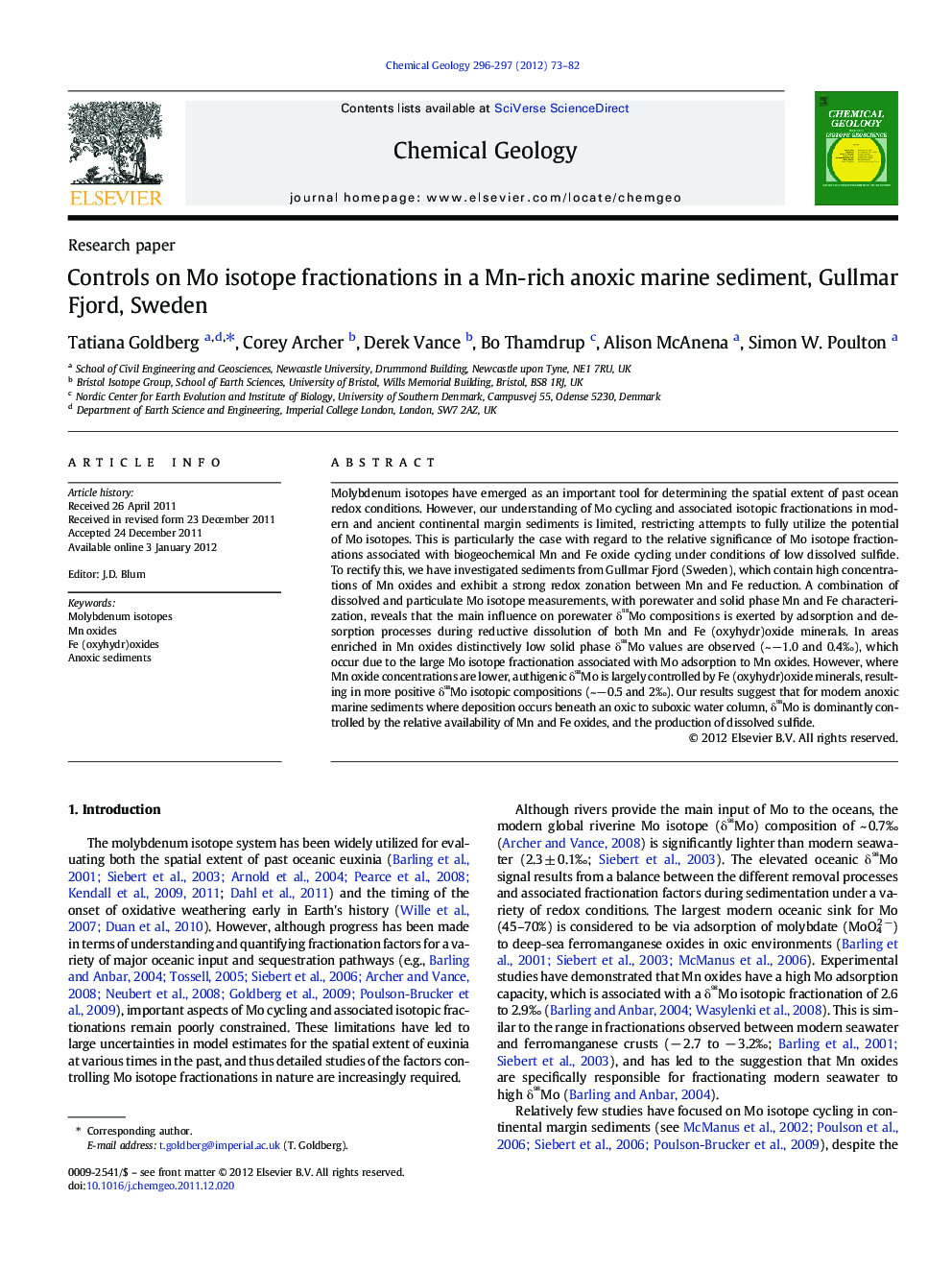| Article ID | Journal | Published Year | Pages | File Type |
|---|---|---|---|---|
| 4699528 | Chemical Geology | 2012 | 10 Pages |
Molybdenum isotopes have emerged as an important tool for determining the spatial extent of past ocean redox conditions. However, our understanding of Mo cycling and associated isotopic fractionations in modern and ancient continental margin sediments is limited, restricting attempts to fully utilize the potential of Mo isotopes. This is particularly the case with regard to the relative significance of Mo isotope fractionations associated with biogeochemical Mn and Fe oxide cycling under conditions of low dissolved sulfide. To rectify this, we have investigated sediments from Gullmar Fjord (Sweden), which contain high concentrations of Mn oxides and exhibit a strong redox zonation between Mn and Fe reduction. A combination of dissolved and particulate Mo isotope measurements, with porewater and solid phase Mn and Fe characterization, reveals that the main influence on porewater δ98Mo compositions is exerted by adsorption and desorption processes during reductive dissolution of both Mn and Fe (oxyhydr)oxide minerals. In areas enriched in Mn oxides distinctively low solid phase δ98Mo values are observed (~−1.0 and 0.4‰), which occur due to the large Mo isotope fractionation associated with Mo adsorption to Mn oxides. However, where Mn oxide concentrations are lower, authigenic δ98Mo is largely controlled by Fe (oxyhydr)oxide minerals, resulting in more positive δ98Mo isotopic compositions (~−0.5 and 2‰). Our results suggest that for modern anoxic marine sediments where deposition occurs beneath an oxic to suboxic water column, δ98Mo is dominantly controlled by the relative availability of Mn and Fe oxides, and the production of dissolved sulfide.
► Gullmar Fjord sediments show distinct redox zonation. ► Porewater δ98Mo is driven by Mo ad- and desorption to/from Mn and Fe oxides. ► Fe (oxyhydr)oxides play significant role in modern marine Mo cycle. ► δ98Mo varies according to Mn-oxide content, redox zonation and dissolved HS−.
